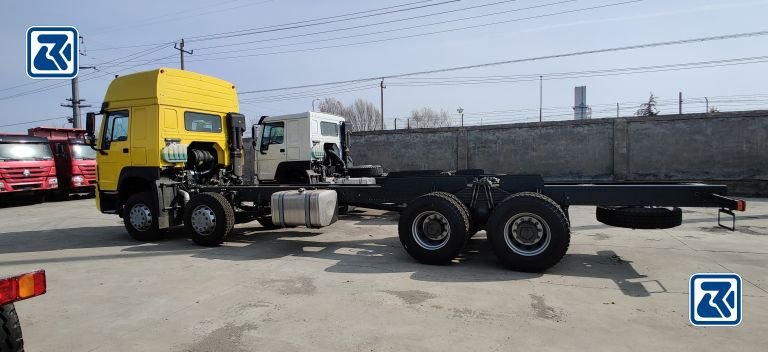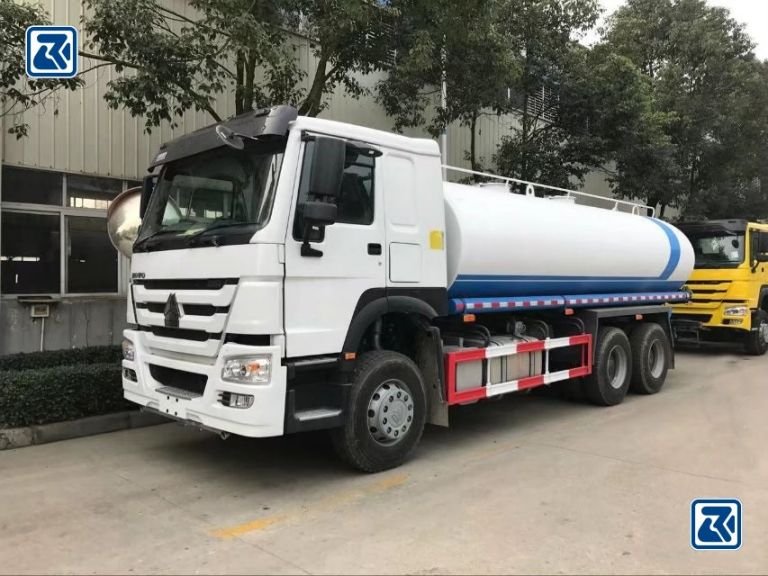When choosing a tanker trailer, one of the most important factors is whether its capacity and design meet your transport needs. When considering the capacity of a tanker truck, you need to weigh a number of factors including volume, frequency and compliance.
For most haulage companies, choosing the right tanker capacity is critical – too little capacity can lead to frequent hauls and increased costs. And too much capacity can bring compliance issues and bring problems with transport efficiency.
By understanding the range of tank trailer capacities and their impact on transport efficiency and safety, you’ll be able to make more informed vehicle purchase decisions. In the next section, you can make more informed vehicle purchasing decisions by reading our How Much Gas Does A Tanker Truck Hold document.
Table of Contents
What is a Tanker Truck?
A tanker trailer is a vehicle designed to transport liquids such as oil, gas, and chemicals in compliance with strict safety standards and industry regulations. Design features include corrosion-resistant coating on the interior walls, solid body construction, and configurable capacity and weight capacity for different transport needs.
Depending on your transport needs, you’ll need to choose the right tanker with the right capacity and configuration. If you are transporting flammable or explosive materials, you may also need to equip additional safety devices, such as explosion-proof valves and pressure relief systems.
Capacity by trailer size
Tank trailers typically range in capacity from 1,000 gallons to 11,600 gallons. Smaller tank trailers (1,000 to 3,000 gallons) are suitable for transporting smaller liquids such as airport refuelling and household fuels, while larger tank trailers (5,500 to 11,600 gallons) are suitable for transporting bulk liquids such as oil, natural gas, and chemicals.
If your transport needs include transporting multiple liquids at the same time, the multi-compartment design is an ideal choice. With multiple compartments, you can safely transport different types of liquids and avoid cross-contamination between them. For example, you can use a single tank trailer to transport both petrol and diesel without worrying about them contaminating each other. For customers in industries such as oil, gas and chemicals, this design provides a more efficient and safe transport solution.
Tank trailer capacity and features broken down by type
Petroleum Fuel Tank Trailers
Petroleum fuel tank trailers are designed to transport oil and fuel efficiently and safely. With capacities typically ranging from 9,000 to 9,800 gallons and featuring a multi-compartment design, they are capable of safely and efficiently transporting different types of fuel. such as petrol, diesel or aviation fuel. This design not only meets compliance requirements, but also reduces the risk of fuel mixing or contamination. This tank trailer is ideal if you need an efficient and safe solution during transport.
Tank trailers
If you are looking for a dry bulk trailer that is suitable for high loads, then the tank trailer is the ideal choice. The storage tank trailer is fitted with square pads (4 or 5) on each side, these pads provide fixing points for the installation of the auger legs. Depending on the trailer configuration, the maximum storage capacity can be up to 500,000 lbs. For example, a trailer equipped with 4 pairs of auger legs (8 total) is capable of storing up to 400,000 lbs of product. A trailer equipped with 5 pairs of auger legs (10 total), on the other hand, can hold up to 500,000 lbs. of product. This design ensures stable transport of large dry bulk cargoes and allows for an efficient increase in load capacity.
Chemical Tankers
Chemical tankers are used to transport a variety of liquid chemicals and are usually designed without bulkheads. They usually have a capacity of between 3,800 and 8,000 gallons and are capable of carrying large quantities of liquid chemicals. Because of the hazardous nature of the substances being transported, the design of these tankers emphasises safety and spill containment. To meet the demands of high-risk transport, these tankers are often equipped with reinforced body structures and spill containment features. To ensure the stability and safety of industrial chemicals in all types of transport environments.
Pneumatic Tank Trailers
Pneumatic tank trailers are similar to storage tank trailers. Both are used to transport dry bulk goods such as frac sand and cement. It has a capacity range of 500 to 1,650 cubic feet. Equipped with a pneumatic unloading system, it can effectively increase unloading efficiency and reduce operation time. In addition, these trailers are vacuum-sealed for storage, which means they are protected from outside moisture and contaminants that could affect the quality of the product. The pneumatic tank trailers are designed to be flexible, offering 2, 3 or 4 hopper options to suit different product storage needs. Pneumatic tank trailer bodies are constructed from high strength carbon steel, aluminium or stainless steel for extreme durability and to ensure safe and efficient unloading operations.
LPG/Natural Gas Tank Trailers
Liquefied Petroleum Gas (LPG) and Natural Gas (LNG) tank trailers are typically available in capacities from 10,600 to 11,600 gallons. The tanks are made of high-strength steel and equipped with precise pressure and level monitoring systems to ensure that there is no risk of pressure fluctuations or leakage during transport. This tanker design maximises transport safety and compliance.
Crude Oil Tanker Trailers
If you need to transport crude oil, choosing a suitable tank trailer is crucial. Crude oil tank trailers typically have a capacity of between 8,400 and 12,680 gallons, but some models can expand up to 16,800 gallons when needed. These trailers are designed with robust structural and safety features such as bulkhead systems, automatic venting and pressure relief systems to ensure that crude oil remains safe and stable even under extreme transport conditions. In order to reduce risks during transport, some crude oil tank trailers also feature pressure and temperature monitoring systems to ensure safety with every transport.
Hygienic/Food Grade Tank Trailers
In the field of food and pharmaceutical transport, hygiene and safety are key requirements that cannot be compromised. Sanitary/food grade tank trailers are specifically designed for this requirement and typically have a capacity of 6,000 to 7,000 gallons. The tanks are made of stainless steel to ensure compliance with 3A sanitary standards. The interior of the tank is smoothed to minimise the potential for bacterial and microbial growth. In addition, sanitary/food grade tankers are equipped with a special sealing system that effectively prevents external contamination. No matter what type of food or medicine you are transporting, this tank trailer will provide you with the safest possible transport.
Critical Safety Design of Tank Trailers
The safety design of a tank trailer is crucial, especially during the transport of oil, gas and chemicals. Common safety designs include strong body construction, leak-proof sealing systems, and emergency shut-off valves and pressure relief devices to prevent liquid leaks or explosions. In addition, tank trailers should be equipped with pressure-balancing systems that reduce fluid fluctuations, as well as multi-compartment designs that are suitable for transporting multiple liquids. These designs significantly improve transport stability and safety. They also ensure safety and compliance, meeting the strict requirements of government regulators for the transport of liquids.
Get a tailored quote today and elevate your transport efficiency.
How to choose the right tank trailer for your needs?
When choosing the right tank trailer, the first thing you need to consider is the match between the type of liquid and the material. Different liquids require different storage materials to ensure safety. For example, liquids such as oil and fuel are usually stored in steel tank trailers. While for chemicals, especially acidic or corrosive liquids, stainless steel or aluminium tanks are recommended.
The choice of capacity of the tank trailer is also critical. Smaller tank trailers (e.g., 1,000 to 3,000 gallon capacity) are good for short hauls, such as petrol station supplies or home fuel distribution. If you need to transport large quantities of fuel or chemicals, you may want to consider a larger capacity tank trailer (e.g., 5,500 to 11,600 gallons). This will help you make fewer trips, increase efficiency and save money.
In addition, weight is an important factor to consider when choosing a tank trailer. Lightweight aluminium tank trailers significantly reduce fuel consumption during transport and are suitable for scenarios that require long-distance transport. However, steel tank trailers are more robust and are suitable for transporting high-density liquids.
Finally, it is vital to choose a tank trailer that meets safety regulations. Multi-compartment tanks allow you to transport different liquids at the same time, avoiding cross-contamination and complying with relevant safety standards.
To summarise
Choosing the right tank trailer capacity has a direct impact on transport efficiency and compliance. In addition, the type of liquid, the make of the header and overall compliance need to be considered. For example, our company’s HOWO tanker trailers are the preferred choice of many oil and chemical haulers due to their powerful towing capacity and efficient fuel system. For larger hauling capacity needs, HOWO tankers have a capacity of 5,500 to 11,600 gallons for long hauls. Additionally, our HOWO front end has the power and towing capacity to keep tank trailers running smoothly in a variety of complex road conditions.





